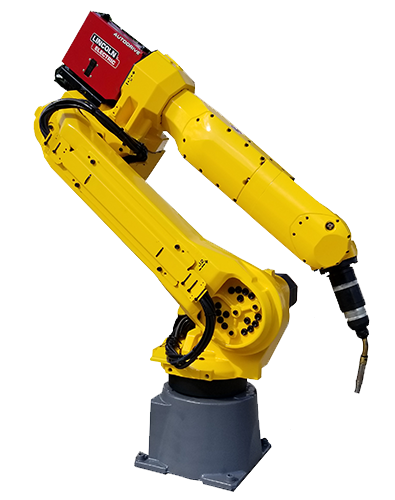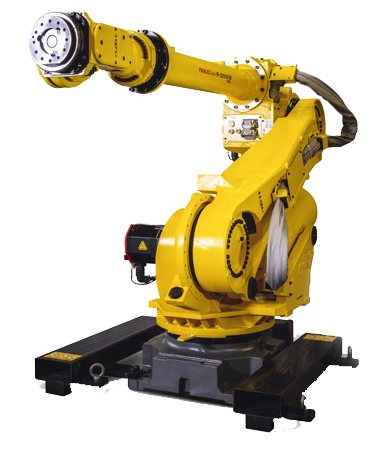Welding is one of the most common applications to be automated by industrial robots. The FANUC Arcmate 100ic/6L along with other arc welding robots completely optimizes welding applications turning them into efficient processes. One of the main benefits of robotic welding is increased productivity. With welding robotic manipulators productivity rates can increase by up to 85%. This results in a significant improvement, allowing manufacturers to keep up with high demand as well as improve profit margins. The main ways industrial robots improve productivity rates is through faster cycle times, higher quality welds, greater uptime, and consistent/longer run times.
Faster Cycle Times
Welding robots operate at much faster speeds than human welders are capable of. It is impossible for a welder to be able to match the speed and precision of the Yaskawa MA1900. With faster weld times, more workpieces can be welded in less time. The ability of welding factory robots to complete more parts in less time improves productivity rates. A single welding robot can be three to four times more productive than a human welder. Implementing multiple industrial robot arms will result in hyper productivity. Higher productivity allows those with high product volumes to meet quotas and to also have the ability to scale up operations without having to add additional workers or equipment.Higher Quality Welds
The programmability and repeatability of robots makes them more accurate than manual welders. Welds are produced at a higher quality which is not only important when it comes to the condition of products, but also productivity. The accuracy of the ABB IRB 1600 mitigates errors ensuring all welds are uniform to one another, smooth, clean, and completed correctly with the first cycle run. Fewer errors means less scrap and rework, reducing the amount of time it takes to complete a weld. With fewer errors to correct, more workpieces can be welded, increasing productivity.Greater Uptime
One of the issues with manual welding is the amount of downtime involved. More time is spent setting up, positioning parts, and cleaning during manual welding than actual welding. The more downtime there is the less productive an operation will be. With articulated robots there is greater uptime than with manual welding. With automated welding systems parts are fed to six axis robots by either an operator or another manufacturing robot arm, freeing the welding robot to solely focus on welding and reducing setup time. Torch cleaning stations or reamers automate the torch cleaning process shortening it to just a few seconds instead of several minutes. With robotic welding, downtime is kept to a minimum, resulting in more welding time and higher productivity.Consistent and Longer Run Times
Welding robots also improve productivity with their consistent and longer run times. Welding factory robots can operate continuously with idle time being rare. Human welders will likely require breaks due to the taxing nature of welding applications. They may also become distracted or get sidetracked. These inconsistencies negatively impact productivity. Welders are also limited to welding a certain number of hours per day. Welding robots provide consistent run times as they do not need breaks and will not have delays in between cycles. They can also run around the clock, seven days a week. Consistent and longer operation times of welding robots increases productivity.Robots Done Right is the place to start when it comes to used robots. Contact us if you are interested in buying or selling a welding robot.

